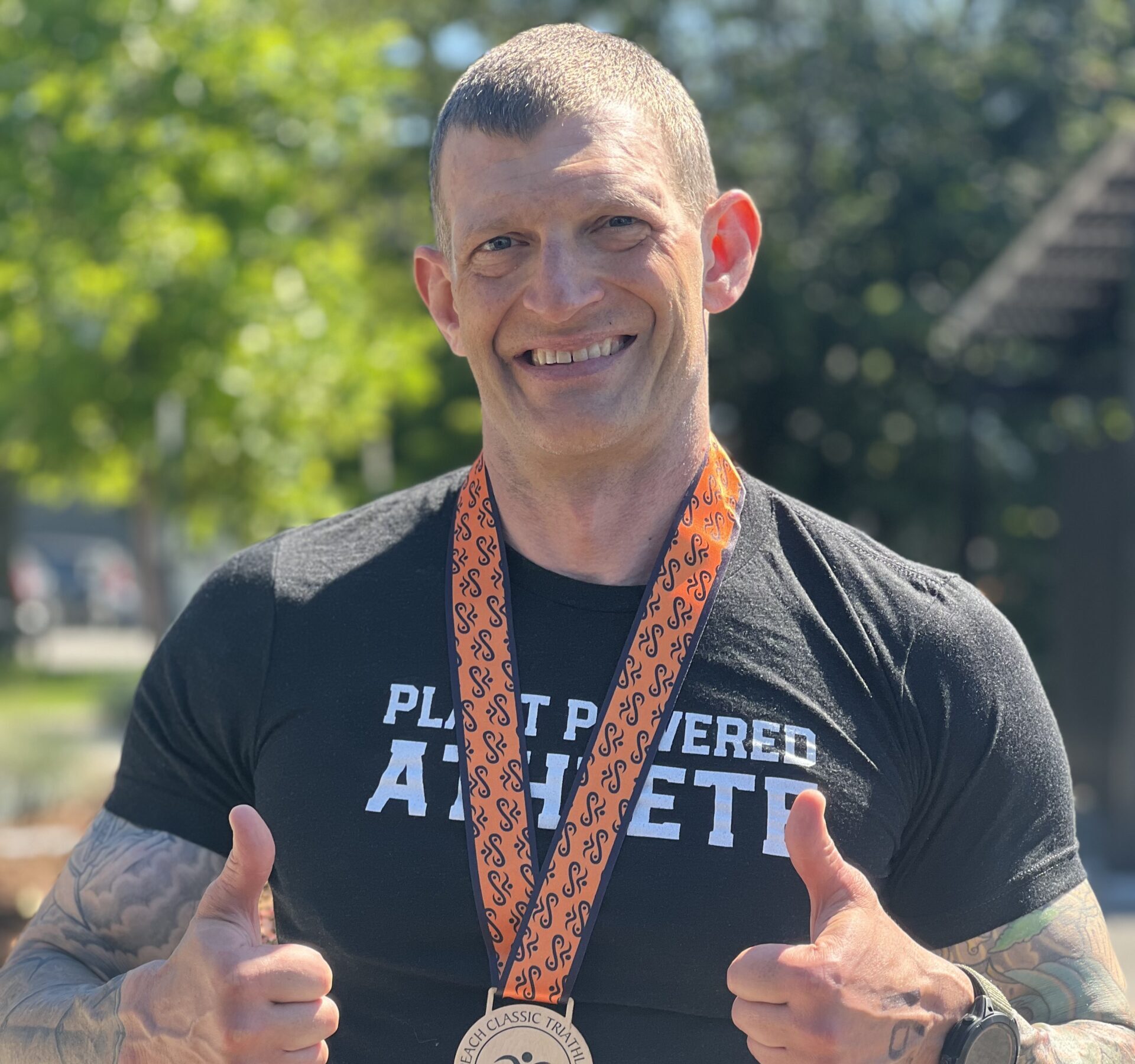Participating in a triathlon is an exhilarating and challenging experience, one that tests your physical limits and mental resilience. As a Plant Powered Athlete, I embarked on this journey with specific goals and a training plan that I put together with the help of ChatGPT. Here’s a detailed account of my experience, including the ups, downs, and lessons learned.
Setting the Targets
For this triathlon, my targets were straightforward:
Swim: 40 minutes for 1500 meters (just under a mile)
Bike: 1 hour 20 minutes for a 40K road ride
Run: 1 hour 15 minutes for a 10K run
These targets were ambitious but attainable. I had only five weeks to prepare, starting from scratch, and was also dealing with a calf injury that made running particularly challenging and some business travel near the end of my training block. Oh, and I had also not done any swimming or running prior to embarking on this adventure… so, could ChatGPT help me get ready?
The Training Plan
I reached out to ChatGPT to help me create a training plan. Given the time constraints and my injury, the plan had to be flexible. Life often required adjustments, such as swapping out a planned run for a swim. Despite these challenges, I managed to stick to the majority of the plan, thanks to my background in mountain biking and general fitness knowledge.
Race Day Performance
On race day, the results were a pleasant surprise:
Swim: 37 minutes (beat my goal)
Bike: 1 hour 27 minutes (slightly over my target, but challenging due to 500 meters of climbing)
Run: 57 minutes (significantly under my target)
The swim went exceptionally well, even though swimming is not my strongest suit. The bike segment, usually my strength, was tougher than expected due to the terrain and active road conditions. For the run, I exceeded my expectations, partly thanks to the camaraderie of running alongside another competitor. We chatted the entire way, which made the run feel less strenuous.
Evaluating ChatGPT’s Training Plan
ChatGPT did a commendable job putting together a structured training plan. However, there are limitations to using an AI for such purposes. While ChatGPT provided a solid foundation, it lacked the adaptability that a human coach offers. A coach can make real-time adjustments based on your performance and recovery needs, something that was crucial in my training given my previous injury and tight schedule.
The Human Element
The ability to adapt and listen to my body played a significant role in my training success. My extensive experience in various forms of training allowed me to make smart adjustments, such as switching workout days to ensure proper recovery. This adaptability is something an AI can’t fully replicate.
Final Thoughts
Reflecting on the journey, I’m proud of the progress and performance. Despite starting serious training only five weeks before the event and being in my late 40s, I managed to achieve my goals and enjoy the process. While ChatGPT was a valuable tool, the experience underscored the importance of the human element in training.
For anyone considering using AI for training plans, I recommend it as a starting point. However, for optimal performance and personalized adjustments, a human coach is invaluable in adjusting the plan to when you’re feeling either tired or have some extra energy in the tank.
Stay tuned for more adventures and insights on the Plant Powered Athlete blog. Keep pushing your limits and remember, the key to success is a balance of smart planning, consistency and adaptability.
